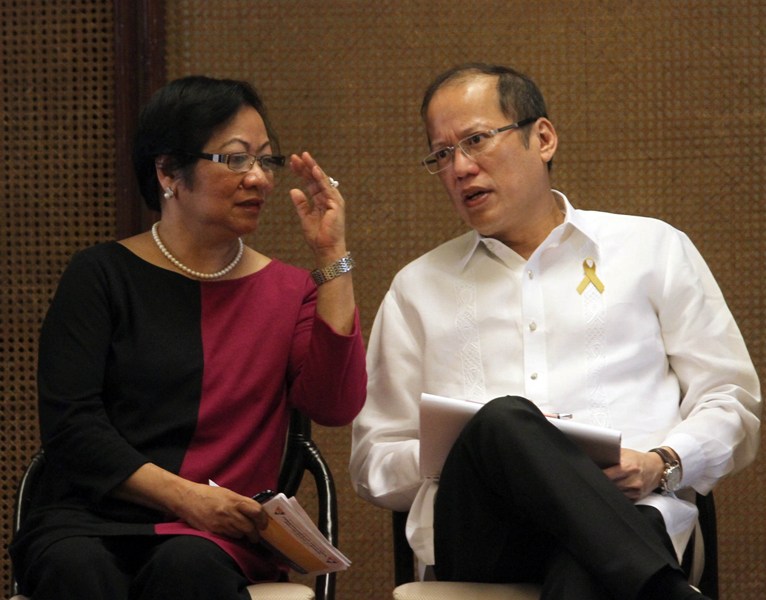Philippine News
Baldoz says gov’t efforts in fighting child labor gaining ground

Secretary of the Department of Labor and Employment Rosalinda Dimapilis-Baldoz and President Benigno Aquino III. Photo courtesy of Malacanang Photo Bureau.
MANILA — The efforts of the government in fighting child labor is gaining ground as the country has been included in the list of nations that successfully battle the global problem on the employment of minors.
According to Department of Labor and Employment (DOLE) Secretary Rosalinda Baldoz, the Philippines for the second year got a “significant advancement” rating from the United States Department of Labor (US DOL) on its findings on the worst forms of child labor last year.
The country is one of the 13 nations, the only one from the Asia Pacific that has been given such rating. The others countries were: Albania, Brazil, Chile, Colombia, Costa Rica, Cote d’Ivoire, Ecuador, El Salvador, Peru, South Africa, Tunisia, and Uganda.
“This is the second year that the Philippines was given a ‘significant achievement’ rating by the US DOL Findings. We can say that we are successful in our fight against child labor based on that,” she said during her speech at the celebration of the National Children’s Month and Commemoration of World Day Against Child Labor held in Quezon City on Saturday.
A total of 143 countries are part of the US DOL 2013 Findings on the Worst Forms of Child Labor.
The said report is being conducted by the US Congress every year. It is a requisite of the US Trade and Development Act of 2000 to countries to implement policies to fight the worst forms of child labor to be able to be eligible on the US trade preference program.
Baldoz noted that getting such recognition from the international community challenged them to further strengthen their fight against child labor.
With this, the Labor and Employment chief reported several government projects that are being implement to help curb the problem on child labor such as the Child Labor-Free Barangay Program, H.E.L.P. M.E. Convergence Program, among others.
The Child Labor Free Barangay Program, which was introduced in 2012, is an integrated approach in coordination with the barangay, non-government organizations (NGOs), and other stakeholders, where they are included in the consultation, planning, implementation of services and programs of the barangay.
“Under the program, we will ensure that the beneficiaries will be able to go to school, giving job opportunities to their parents or to give them livelihood so that they will not push their children to work,” she said.
Based on the 2011 National Survey on Children, the country has 3.21 million child laborers, majority of them or 2.99 million are engaged in hazardous work, belongs in the informal sector, particularly in agriculture.
On the other hand, H.E.L.P. M.E., a community-based approach against child labor, has a proposed budget of P9 billion to be implemented in four years, or from 2013 to 2016.
It aims to free at least 75 percent of the 2.
9 million child laborers in the country by 2016. The goal of the convergence program is to move out at least 893,000 children from hazardous work.
The H.E.L.P. M.E. stand for H-health services and medical assistance for the rehabilitation and recuperation of child laborers; E- education and training program appropriate to child laborers including learning opportunities for their parents; L- livelihood opportunities to families of child laborers; P- prevention, protection, and prosecution; M- monitoring of the status of implementation of the convergence program/projects/activities; and E- evaluation of the efforts undertaken in terms of impact and results
Under the H.E.L.P. M.E. convergence program, identified barangays have been categorized as “low-hanging fruits”, “continuing”, and “new frontier”.
The “low-hanging fruits” are the barangays where several initiatives have already been provided by local government units (LGUs) and social partners, such as ordinances, functional barangay council for the protection of children, profile or masterlist of child laborers, ensuring and monitoring school attendance and performance of children by their teachers and principals, and ensuring that parents of children are earning sufficient income to support the needs of the family.
The “continuing” barangays are categorized as those where interventions have already been initiated but would need enhancement to sustain said interventions. Meanwhile, “new frontier” barangays are those where initial advocacy activities have already been conducted and commitment of barangay officials have been solicited.
Aside from the DOLE and the Department of Social Welfare and Development also part of the convergence program are the Technical Education and Skills Development Authority, Department of Education, Department of Health, Department of Agriculture and ten Department of Interior and Local Government.
At the same time, Baldoz acknowledged the desire of these children, who want to help their families by working at an early age but she reminded them of the importance of getting an education.
“Mag-aral kayong mabuti sapagkat tanging edukasyon ang maghahatid sa inyo sa mabuting bukas. Ang edukasyon ang pinakamabisa ninyong sandata upang labanan ang kahirapan. Edukasyon ang inyong tanging puhunan upang magkaroon kayo ng kakahayang mabuhay sa sarili ninyong sikap,” she said.
Baldoz added, “Kayo ay mga batang manggagawa dahil nais ninyong makatulong sa inyong mga magulang at sa inyong sarili. Kayo ay nagtatrabaho sapagkat nais ninyong makatayo sa sariling mga paa. Ito’y isang napakadakilang layunin. Ngunit tiyakin natin na ang trabahong inyong ginagawa ay hindi ipinagbabawal o ilegal, o kaya’y makakasama sa inyong kalusugan at kaisipan.“





















